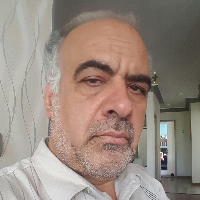Impact of Mongols Invasion on the Concept and Structure of the Iranian City during Ilkhans Rule
The Mongol invasion of Iran occurred at a time when Iranian City was considered as the capital and center of power for several centuries. During the Pre-Mongolian system, the Iranian city was united with power, and defined not by itself but within an urban organization on the scale of vast territories. The Mongol invasion massively destroyed great parts of the Iranian cities, particularly in northwestern parts of Iran, this together with the reduction of the population helped the farmlands and villages to be destroyed and deserted. The taxation policies of the Ilkhans, coupled with their nomadic way of living and cattle, breeding waned the agricultural products resulting in the serious fall of the number of cultivated villages and leaving behind many acres of uncultivated lands. This rendered meaningless the pre-Mongolian urban system, which was based on the concentration of power in the city and administration of the suburbs from there. The present research is aimed at surveying the development of the concept and stand of the Iranian city and the subdivisions thereof (such as suburb and township) during this era and after a period of relatively powerful urbanism (of the Seljuki and Kharazmshahi rules); therefore, responding to the questions as to what impacts the decline of urbanism at the beginning of the Ilkhans dynasty and its re-birth at the middle and toward the end of this period had on the concept of a city in Iran; and how the structure of the Iranian city which consisted of the castle, township, and suburb changed with the occurrences of this era as compared with the preceding era, become very important. To achieve this aim and to answer the above questions through a collection of written documents and library studies at first the historical texts remained from those eras as well as analyses of the contemporary historians were reviewed through a historical interpretative method, and situation of Iran and the factors affecting the physical, economic, administrative and social aspects of the Mongol rule were analyzed. Then by using the logical deduction method, samples of urban development of the Ilkhan era were examined, and urban features of this period and its differences with the pre-Mongolian era were carefully examined. Due to the turbulences of the Mongols rule and their nomadic way of living, many cities and habitable areas around them were physically destroyed and the economic decline arising from the policies of the Ilkhan rulers gave the destructions further vastness and depth. These incidents changed the previous internal-external urban relations. Mongols alienation with the issue of the city on one hand and their nomadic tradition on the other caused them to follow up urban development through a different method even when their attention was drawn to the issue of the city. We observe development in the concepts of city, township, and suburb in this period. Construction of new cities and suburban townships such as Rashidiyeh, Kazaniyeh, and Soltaniyeh, shows a new structure of the cities that are partly stratified with several cores.
- حق عضویت دریافتی صرف حمایت از نشریات عضو و نگهداری، تکمیل و توسعه مگیران میشود.
- پرداخت حق اشتراک و دانلود مقالات اجازه بازنشر آن در سایر رسانههای چاپی و دیجیتال را به کاربر نمیدهد.



